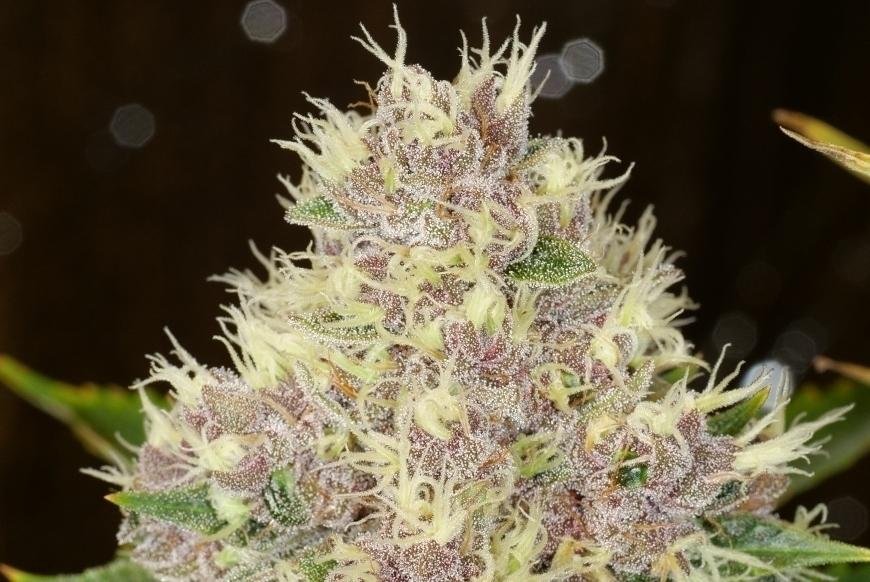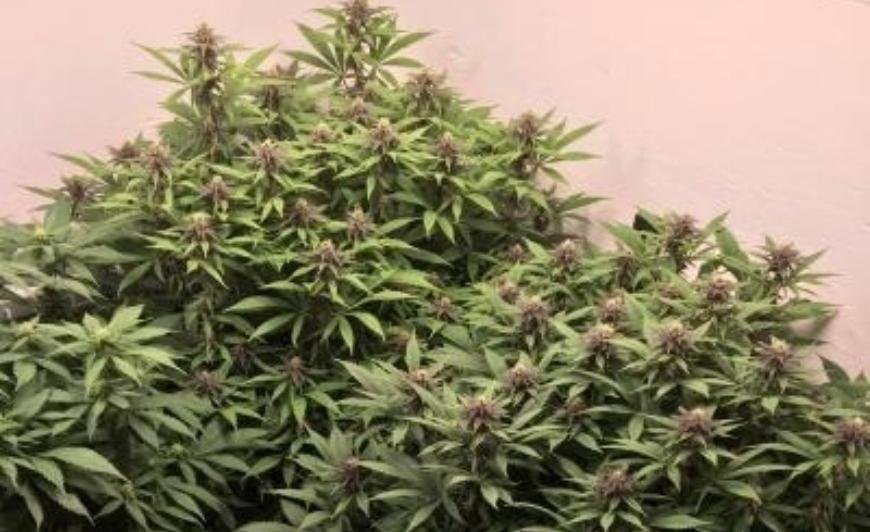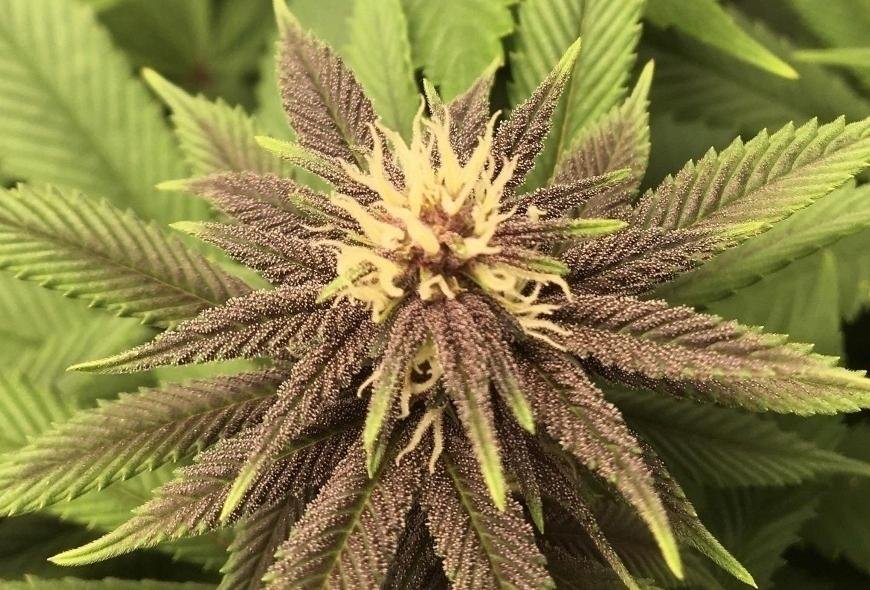LSD Strain
Fascinating world of the LSD strain, a potent and popular cannabis variety that has captured the attention of recreational growers and users alike. In this comprehensive blog post, we will explore its unique properties and characteristics.

Tracing its origins, we'll then examine the genetics and lineage of LSD to gain a better understanding of its unique properties. Next, we'll discuss optimal growing conditions for cultivating your own LSD plants.
Furthermore, you can expect to learn about THC, CBD, and other cannabinoid levels present in the LSD strain. We will also delve into its diverse effects on users as well as highlight its distinct flavor profile.
Join us on this captivating journey through one of today's most sought-after cannabis strains - the remarkable LSD strain.
Table of Contents:
- Overview of LSD Strain
- History of LSD Strain
- Genetics and Lineage of LSD Strain
- Growing Conditions for LSD Strain
- THC,CBD and other cannabinoid levels
- Effects of LSD Strain
- Flavor of LSD Strain
- FAQs in Relation to Lsd Strain
- Conclusion
Overview of LSD Strain
The LSD strain is a hybrid developed by Barneys Farm that combines the genetics of Mazar and Skunk #1. This hybrid strain provides a wide range of sensations, tastes and fragrances to please even the most experienced cannabis aficionado. The buds have a bright green color with hints of purple throughout, giving it a visually appealing look. The aroma is sweet and skunky with notes of citrus, while the flavor has earthy undertones mixed with berry sweetness.
THC levels in this strain range from 16-20%, making it fairly strong but not overly potent. CBD levels are low at around 0.2%. Other cannabinoids present include CBG (0-1%), CBC (0-2%) and THCV (trace amounts). Myrcene is the most abundant terpene present, comprising 1-3%, while trace amounts of limonene, caryophyllene and linalool can also be found.
The high from LSD starts off slowly before gradually building up into an intense head buzz coupled with increased creativity and focus; this makes it great for creative endeavors or studying sessions alike. The high can lead to an elated, blissful state that may last for extended periods of time, depending on dosage.
Overall, the LSD strain should be respected for its powerful effects. Beginners should start off slow when trying this variety to get used to its potency before consuming more than the recommended dosage.
The overview of LSD strain provides an insight into the different types, effects and potential risks associated with its use. Its history is a fascinating one that has been shaped by both medical research and recreational experimentation.
History of LSD Strain
The tale of LSD's ancestry is a long and fascinating one. It was first developed in the Netherlands in the late 1990s by Dutch breeders. The original lineage of this strain comes from two different landrace varieties: Afghani and Skunk #1. This combination created an indica-dominant hybrid that has since become popular among cannabis connoisseurs around the world.
The history of LSD strain is an interesting one, and its development over the years has been fascinating to observe. Examining the genetic makeup and ancestry of this potent hallucinogenic can give us a deeper understanding of its origins.
Genetics and Lineage of LSD Strain
The LSD strain is an indica-dominant hybrid that is known for its potent effects. It was created by crossing the classic G13 and a Haze hybrid, resulting in a powerful strain with high THC levels. This makes it one of the most sought after strains among recreational users looking for strong psychoactive effects. This strain has its roots in the original G13 genetics, which were crafted in California during the '70s and have been continuously improved since then.
The genetics of LSD are complex but have been carefully crafted to create a unique experience for users. Myrcene, pinene, caryophyllene, limonene and linalool are the primary terpenes in LSD which give it a unique flavor profile and effects on users. Its buds are dense and light green with purple hues throughout and they produce a pungent aroma when broken up or smoked.
The Genetics and Lineage of LSD Strain is a complex topic, with many variables to consider when growing this particular strain. To ensure the best results for your crop, it's important to understand the optimal growing conditions for LSD strain.

Growing Conditions for LSD Strain
To ensure successful growth and potency of LSD, temperatures must be kept within the range of 70-85°F (21-29°C). Temperature is a critical factor when it comes to cultivating LSD, as temperatures that are too hot or cold can impair its growth and potency. Ideal temperatures for cultivating LSD range from 70-85°F (21-29°C). If you’re growing outdoors in warmer climates, make sure to keep your plants shaded during peak hours when temperatures reach their highest points.
Humidity levels should also be monitored closely when growing LSD. Generally speaking, humidity levels should remain between 40%-60%. If the humidity levels drop below 40% or rise above 60%, consider using misting water, a humidifier, an air conditioner or dehumidifier to bring them back into optimal ranges.
Lighting is another important factor for successful cultivation of the LSD strain – though not necessarily as crucial as temperature and humidity control. Indoors, optimal lighting is achieved by placing fluorescent lamps at a distance of 12-18 inches from the plants; outdoor growers should guarantee their crop receives 8 hours of direct sunlight during vegetative stages and 6 hours in bloom.
Nutrient requirements vary depending on which type of medium you choose for growing LSD: soil or hydroponics? Soil growers should opt for an organic fertilizer mix rich in nitrogen while hydroponic growers will require additional nutrient solutions specifically designed for cannabis cultivation such as Fox Farm’s Big Bloom Liquid Plant Food or General Hydroponics Flora Series nutrients. Regardless of which method you choose, always monitor pH levels throughout all stages of growth – ideally keeping them between 5.8 - 6.5 – and adjust accordingly if necessary by adding lime powder or sulfuric acid solution depending on whether pH needs raising or lowering respectively .
Finally, proper pruning techniques can help maximize yields from this particular strain; however they must be used judiciously so as not to cause any unnecessary damage to delicate trichomes present on buds during flowering periods. Prune off any fan leaves blocking light penetration onto lower parts branches and trim away dead foliage regularly but avoid topping altogether unless absolutely necessary since doing so could stunt future growth potential significantly.
Growing LSD strain requires careful attention to environmental conditions, such as temperature and humidity levels. Providing the correct attention and upkeep can bring a gratifying experience for cultivators. Moving on from growing conditions, let's look at THC, CBD and other cannabinoid levels in this particular strain of LSD.
THC,CBD and other cannabinoid levels
The LSD strain of cannabis is known for its high THC levels and low CBD content. The average THC level of this strain can range from 20-30%, making it one of the most potent strains available on the market. In addition to its powerful THC content, the LSD strain also contains a range of other cannabinoids such as CBG, CBC and CBN which can offer various benefits.
Overall, the combination of these three cannabinoids along with higher than normal levels of THC makes up what we know today as the popularly sought after LSD Strain. If you're searching for something potent enough to carry you through a hectic workday or just need some extra chill during your break, the LSD Strain is worth considering.
Effects of LSD Strain
The effects of the LSD strain are often described as being a powerful and long-lasting experience. With its high THC content of up to 24%, the LSD strain is among the most potent on offer, offering an intense psychedelic experience that can last for hours. This strain is perfect for those who seek a potent, extended psychedelic trip due to its exceptionally high THC content of up to 24%.
When consuming this strain, users should expect a strong body buzz that may include sensations of euphoria and relaxation. Many users also report experiencing visual distortions such as trails or halos around objects in their environment. Additionally, some people have reported having mild auditory hallucinations when using this strain. The effects can be quite overwhelming so it’s important to start with a low dose if you’re new to psychedelics or cannabis in general.
Given the potential risks associated with LSD strain, it is essential to be mindful before taking this powerful psychedelic. Next, let's investigate the flavor characteristics of this strain.
Flavor of LSD Strain
The flavor of LSD strain is an intense, earthy and pungent mix of sweet and sour. It has a strong skunky aroma that is quite reminiscent of diesel fuel. The taste is quite distinct with notes of pine, wood, citrus, spice and herbs. Its effects are generally described as uplifting and energizing with a slight body buzz that can last for hours.
When smoking or vaping this strain it produces thick smoke which can be harsh on the throat but also smooth at the same time. When inhaling the smoke you will get hit by an intense diesel-like aroma followed by some sweet berry undertones when exhaling it out through your mouth or nose.
Overall, LSD’s flavor has been described as being both enjoyable yet powerful; so if you are looking for something that packs a punch then look no further than this infamous cannabis hybrid.

FAQs in Relation to Lsd Strain
What strain is good chemistry LSD?
It is impossible to definitively answer the question of which strain of LSD is best, as individual chemistry and preferences vary greatly. Generally speaking, some of the more popular strains are Albert Hofmann's original "Sandoz" variety, Orange Sunshine (a form of Sandoz), and Blue Cheer. Different users may find different effects appealing based on the unique properties of each strain. Consequently, it is important for individuals to explore various strains in order to identify the one that suits them best.
Conclusion
With its disease-resistant genetics, this strain can be grown in most conditions with flowering times of 8-9 weeks and yields up to 600 grams per square meter. If you're curious about the lsd strain's unique flavor profile or cannabinoid levels, there are plenty of resources available online to help you learn more.






































































































































